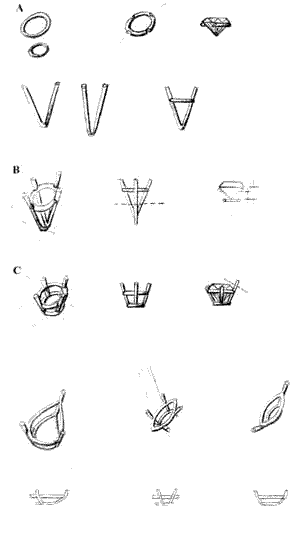Griffes embedding
The griffe is a support that consists in a round thread (wire) that then forms a small basket with two rings laid one upon the other (dis. A) a big one and a little one; the part of the stone that is underneath the belt lays on the first one and to keep the two rings distant, four vertical and equidistant wires (threads) open like a "V " are used (dis. B) that are welded against the rings. The excess of the wire above the belt of the stone that will be arranged in the wire, is bent against the crown of the stone smoothed and then levigated (dis. C). The griffes can have 3,4,6,8 points. Normally the 4 points are used,while for the smallest stones 3 points and for the largest 6 or 8 points are used. For the central stones of the rings that have a certain size, the so-called "double points" are used, they consist in a griffe with points each of which is double. This particular type of griffe is used for aesthetic reasons because it doesn't only give lightness to the object but it also shows the naked beauty of the stones.
